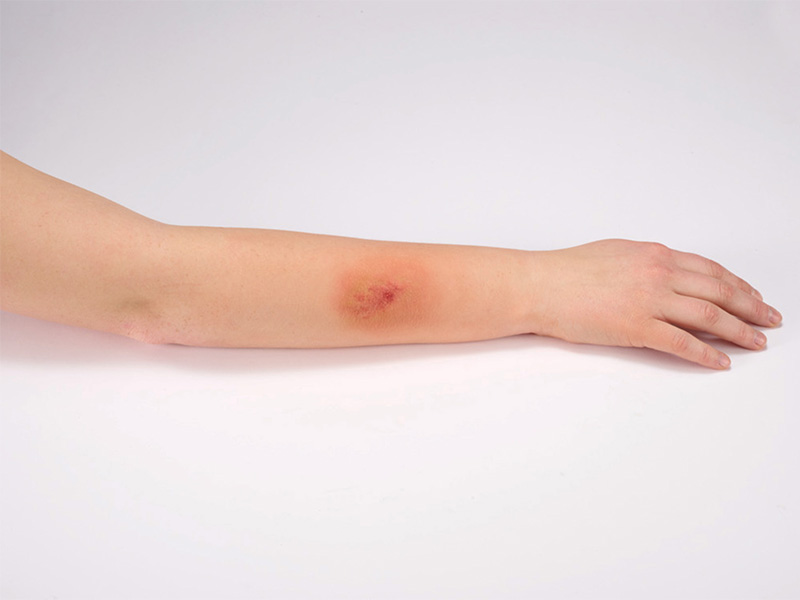No content results match your keyword.
Content
You have successfully logged out.
Challenges in Peripheral IV Access
An unsuccessful attempt at IV access or catheter failure before the completion of therapy can pose a bruden to patients, caregivers and the healthcare system.1 Extending the dwell time for peripheral IV catheters can help reduce health system costs and save nursing time.1

Peripheral IV insertions are a common invasive procedure in hospitals and are a necessary first step in infusion therapy. It is estimated that between 60% to 90% of hospitalized patients require an IV catheter during their hospital stay.2 However, for such a common procedure there are also many known factors that contribute to peripheral IV catheter failures. According to various studies, the overal IV catheter failure rate lies between 35% to 50%.2 Recent nursing guidelines have recommended that peripheral IV catheters remain in the patient until no longer clinically needed. But with such a high failure rate, it is very likely that a patient will require multiple insertions for the duration of their hospital stay which can increase pain and reduce patient satisfaction.
When a peripheral IV catheter fails before the completion of the patient's therapy, another catheter must be reinserted. After one peripheral IV catheter failure, there is an increased likelihood that catheters placed afterwards will also fail2, creating a negative cycle of catheter removal and reinsertion.
Multiple insertion attempts on one vein can lead to venous depletion. When peripheral vascular access is no longer feasible for a patient they are often escalated to more invasive, risky and costly venous access devices.3 This creates added costs to the hospital and increases the possibility of catheter-related complications.
Phlebitis, or inflammation of the vein,4 encompasses a spectrum of inflammation and infectious pathology. It can be mechanical or chemical. Mechanical phlebitis is related to the physical properties of the catheter and the possible traumatic movement of the catheter, for example catheter insertion in an area of flexion, in relation to the venous wall.4 Chemical phlebitis occurs when the infusates irritate the venous wall and cause inflammation.4

Various scales have been created to assist in properly identifying the different grades of phlebitis. In most instances of phlebitis, the treatment begins with the removal of the catheter.2 This could necessitate a reinsertion attempt later on.
Inadvertent tugs on the IV line or catheter can cause dislodgement which results in loss of use, delayed medication delivery, and another insertion attempt. Reducing catheter movement lessens the chance of dislodgement.4


Catheter-related bacterial infection can be divided into two categories: catheter-related bloodstream infections (CR-BSI) or local catheter insertion site infection. Both types are a result of the presence of bacteria at the insertion site that migrates into the bloodstream.
There are many causes for catheter-related bacterial infections5:
Catheter occlusion can be defined as the loss of the ability to infuse fluids and/or medications through a previously functioning IV catheter.2
Occlusion can occur from2:

Infiltration is the most common form of IV catheter failure.6 Intravenous infiltration is defined as the efflux of solutions from a vessel into the surrounding tissue during an infusion.7
Infiltration of the IV therapy into surrounding tissues may occur if the catheter migrates out of the vein over time, was incompletely threaded into the vein at the time of insertion, or is passed through the vein and out the other side.8
“In a perfect world, an IV catheter would be constructed of the most suitable material and inserted at the best possible site, using optimized, simple, reproducible, and fully aseptic technique to minimize trauma to the tissues and eliminate contamination.”
* Asterisk indicates required field
1. van Loon FHJ, van Hooff LWE, de Boer HD, Koopman SSHA, Buise MP, Korsten HHM, Dierick-van Daele ATM, Bouwman ARA. The Modified A-DIVA Scale as a Predictive Tool for Prospective Identification of Adult Patients at Risk of a Difficult Intravenous Access: A Multicenter Validation Study. J Clin Med. 2019 Jan 26;8(2):144. doi: 10.3390/jcm8020144. PMID: 30691137; PMCID: PMC6406455.
2.Helm RE, Klausner JD, Klemperer JD, Flint LM, Huang E. Accepted but unacceptable: peripheral IV catheter failure. J Infus Nurs. 2015; 38(3): 189-203.
3. Kaur, P., Rickard, C., S. Domer, G., & R. Glover, K. (2019). Dangers of Peripheral Intravenous Catheterization: The Forgotten Tourniquet and Other Patient Safety Considerations. IntechOpen. doi: 10.5772/intechopen.83854
4. Gorski LA, Hadaway L, Hagle ME, Broadhurst D, Clare S, Kleidon T, Meyer BM, Nickel B, Rowley S, Sharpe E, Alexander M. Infusion Therapy Standards of Practice, 8th Edition. J Infus Nurs. 2021 Jan-Feb 01;44(1S Suppl 1):S1-S224. doi: 10.1097/NAN.0000000000000396. PMID: 33394637.
5. CDC Guidelines. (2011). Guidelines for the Prevention of Intravascular Catheter-Related Infections. Strategies for Prevention of Catheter-Related Infections in Adult and Pediatric Patients. https://www.cdc.gov/infection-control/hcp/intravascular-catheter-related-infection/prevention-strategies.html#toc
6. Nicole Marsh, Emily N Larsen, Mari Takashima, Tricia Kleidon, Samantha Keogh, Amanda J Ullman, Gabor Mihala, Vineet Chopra, Claire M Rickard. Peripheral intravenous catheter failure: A secondary analysis of risks from 11,830 catheters, International Journal of Nursing Studies, Volume 124, 2021, 104095, ISSN 0020-7489, https://doi.org/10.1016/j.ijnurstu.2021.104095
7. Gibian JT, Zakria D, March C, Schaheen B, Drolet BC. Outcomes and Management of Peripheral Intravenous Infiltration Injuries. Hand (N Y). 2022 Jan;17(1):148-154. doi: 10.1177/1558944720906494. Epub 2020 Feb 28. PMID: 32111122; PMCID: PMC8721785.
8. Beecham GB, Tackling G. Peripheral Line Placement. [Updated 2023 Jul 25]. In: StatPearls [Internet]. Treasure Island (FL): StatPearls Publishing; 2025 Jan-. Available from: https://www.ncbi.nlm.nih.gov/books/NBK539795/
It will be forwarded to a responsible contact person who will get in touch with you as soon as possible.